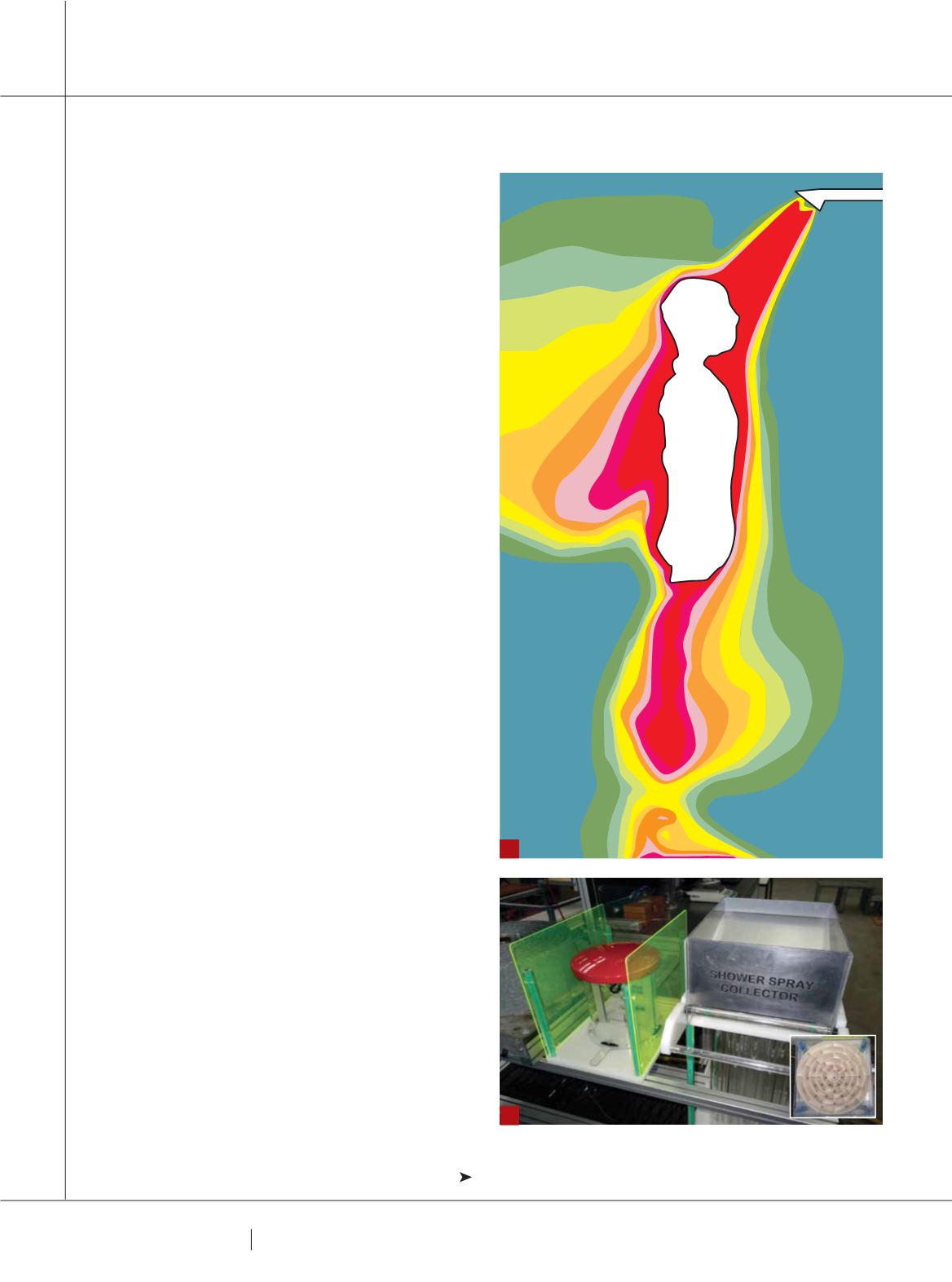

3 6
PLUMBING CONNECTION
SUMMER 2016
Flow rate testing is done for both high pressure
applications – mains water fed showers – and low pressure
showers which are gravity fed systems. The Standard refers
to both ‘low pressure’ and ‘uneven’. Uneven is a difficult one
because it isn’t truly covered in the Standard at this stage
but it is reviewed in a sense of the output. Unevenness can
be caused by one side being fed through mains, with the
other being gravity fed. Another instance of uneven pressure
occurs when a thermal device is installed that will only
actuate under certain temperature controls.
“At the moment we are testing for high pressure
applications at 150, 250 and 350kPa. We also test at
500kPa but we only take 150-350kPa as the nominal. For
low pressure applications we test at 35kPa.”
Despite users not simply going from say 0kPa to
250kPa, testing labs must be consistent in their approach
and conduct tests in one direction. If they overshoot the
mark, they can’t just bring it back up either as they will take it
back down a different flow path, so they have to start again.
“Users don’t just turn a shower on and off. They turn it on,
twist the handles higher and lower and do so until they find
the optimal flow rate and temperature.
“We need to be consistent though. Labs need to have
a consistent approach to all of this because that is what
is being expected by the Conformity Assessment Bodies
and that’s what is expected by our clients. They want to be
assured that what we are producing for them is of quality
and consistency.”
Mean spray spread testing has been around a long time but
as Stephen explains, it was based on round shower heads. As
you would be well aware, shower heads now come in a variety of
shapes and sizes, from oversized rectangles to triangles even.
“We no longer simply just use round shower heads. The
standard addresses this in a number of ways by looking at
‘area’ so we need to take that into consideration when testing.
It is also important to understand what type of hole pattern
each shower head possesses. We look to see if they use
evenly spaced holes, circular patterns, linear patterns etc.
“We are looking for consistent patterns across the spread
of the user, as well as the angle. You don’t want a really small
showerhead throwing out a very wide angle.
“Showers are probably one of the only Standards that
really take into consideration the user’s comfort which is
pretty unique and it also takes in the effectiveness of the
shower itself. With that in mind, we look for consistency of
warmth on the torso. If users aren’t getting that warmth
across their body, they aren’t going to want to shower for
long,” Stephen says.
It’s been well documented that change was coming
because even in the old
AS/NZS 6400:2005 Water efficient
products - Rating and labelling
there was a label that
suggested manufacturers could have a 3 star shower head
that performed at less than 7.5 litres per minute.”
WELS
IMAGE 1:
Testing considers consistent warmth of water
across the entire torso.
IMAGE 2:
Force and coverage tests
are now in place using high tech equpiment.
1
2
















